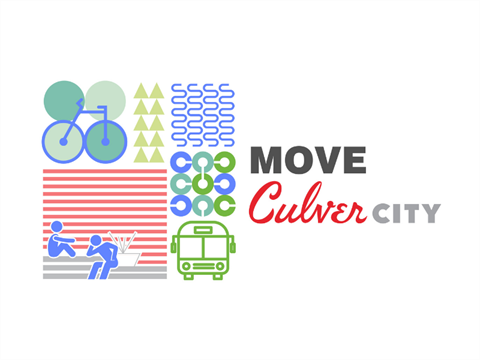Move Culver City Project: Downtown Corridor
Published on January 25, 2021

4th Version of Draft Project Design Now Online
Take our Survey about Street Pavement Designs
On May 18, 2020, the City Council of the City of Culver City directed staff to plan and implement quick-build mobility lane (bus/bike lane) pilot projects to test and demonstrate the benefits of such infrastructure to maximize the use of the roadway and improve mobility. On July 13, 2020, the City Council voted unanimously to move forward with a quick-build mobility lane project. Under the leadership and direction of the City Council, the MOVE Culver City project was born. MOVE Culver City’s Downtown Corridor project is currently in the planning phase of the process. On February 1, 2021 at 6 PM, the City Council will consider the Downtown Corridor design guidelines and design decision recommendations. The 4th Version of the draft design plans have been posted to the project website. Additionally, the public is invited to take a survey about the street pavement designs that will serve to reduce crossing distances and provide more visibility for pedestrians.
About the Project
The Downtown Corridor project will create mobility lanes in both directions on the 1.3 mile stretch of Culver Blvd. and Washington Blvd. between Culver Blvd./Duquesne Ave. and Washington Blvd./La Cienega Ave. This corridor will connect Downtown Culver City with the E-Line Culver City Station and the Arts District, supporting major commercial and job centers. The mobility lane will offer a different mobility option to bikers, scooters, emergency vehicles and transit – including Culver CityBus, Big Blue Bus, LA Metro and LADOT (Los Angeles Department of Transportation) bus lines.
In addition to enhancing the infrastructure for transit, bikes and scooters, the MOVE Culver City Project will also enhance the mobility services by implementing a Circulator service and a Microtransit service, which will leverage the mobility lanes to provide faster and more reliable service in the Downtown area. The Circulator service would launch when the mobility lanes are operational, followed by the Microtransit service at a future date. The Project will also fast track all of the bus stop improvements in the corridor and create three gateway mobility stops at the termini of the corridor (City Hall and the Arts District) and at the E-Line Culver City Station. With the addition of these infrastructure and mobility service improvements, the Project will create feasible, attractive, and sustainable mobility options for the public to connect to destinations.
Background
The MOVE Culver City Project is implementing the guiding principles set forth in the City’s Transit Oriented Development Visioning Plan (adopted in 2017) and the Bicycle and Pedestrian Action Plan (adopted in 2020) to design and construct holistic transportation options for pedestrians, bicyclists, and transit riders. The MOVE Culver City project reimagines Culver City streets as public spaces and prioritizes moving people over cars in the design of the street. The project will implement mobility lanes, facilitating the safe and fluid movement of buses, bikes, scooters, and emergency vehicles through Downtown Culver City, the Helms District, and the Arts District. At the center of the project is the Culver City E-Line station, which is part of a $2.5 Billion capital investment that implemented Metro’s high-capacity light rail service that connects Culver City to Downtown Los Angeles and Santa Monica. One of the main goals of MOVE Culver City is to provide bus riders, cyclists, and emergency vehicles a safer, reliable and more efficient ease of travel to key destinations and regional transit connections.
Three Total Project Locations
The MOVE Culver City Project includes three corridors: Downtown/E-Line/Arts District corridor on Culver and Washington Boulevards (Downtown Corridor), Sepulveda Boulevard, and Jefferson Boulevard. Community stakeholders, the City’s Transportation Department, Public Works Department, and other City departments have been planning Corridor 1, the Downtown Corridor, since October 2020. The Sepulveda and Jefferson corridors will be implemented in the future phase of the project.
About the Implementation Process
This project is being performed through a quick-build pilot implementation process, which includes a condensed schedule, temporary materials, and a robust community engagement approach. The quick-build pilot implementation process was adopted, because it allows for a nimble approach. Designs can be piloted and monitored prior to permanent implementation in order to test the improvements and the impacts on mobility throughout the corridor and adjacent neighborhoods. This approach will also allow for adjustments to address potential issues once implemented.
For more information on the project, please visit the MOVE Culver City website.
About Culver City
Culver City is a five-square-mile, urban community of 39,000 residents surrounded mostly by the City of Los Angeles but also shares a border with unincorporated areas of Los Angeles County. It is centrally located on the Westside near Santa Monica, Beverly Hills, and Los Angeles International Airport. Culver City is particularly known for its well-run public school system, "small town" charm, growing high-tech and creative economies, and a dynamic downtown that is regionally known as a destination for restaurants, live theater, and art galleries.